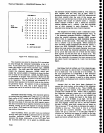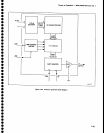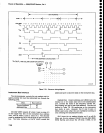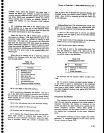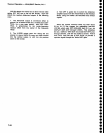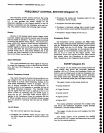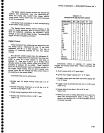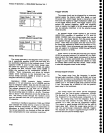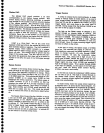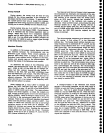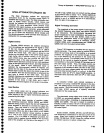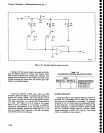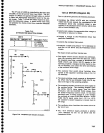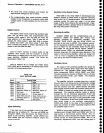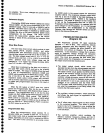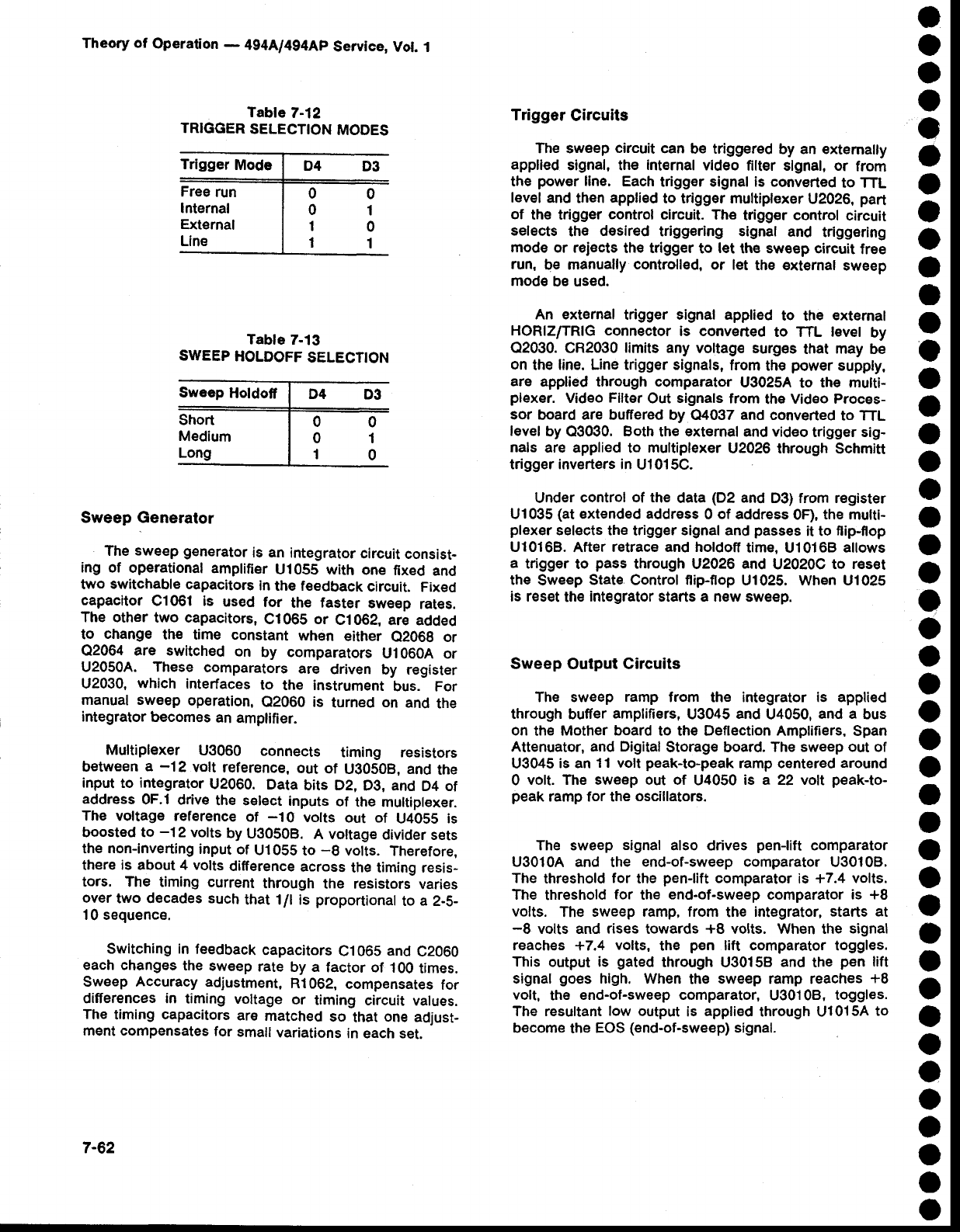
Theory
of
Operation
-
494A/494Ap
Service,
Vol. 1
Tabte
7-12
TRIGGER
SELECTION
MODES
Trigger
Mode
Free
run
Internal
Ext€rnal
Line
Table
Z-13
SWEEP
HOLDOFF
SELECTION
Sweep
Holdoff
Short
Medium
Long
Sweep Generator
The
sweep
generator
is an
integrator
circuit
consist-
ing of
operational
amplifier
U10S5 with
one
fixed
and
two
switchable
capacitors
in
the feedback
circuit.
Fixed
capacitor
C1061 is
used
for
the
faster
sweep
rat€s.
The other
two capacitors,
C1065 or
C1062,
are added
to
change
the time constant
when
either
e2069
or
Q2064 are switched
on
by comparators
U1060A or
U2050A. These
comparators
are
driven
by register
U2030,
which
interfaces
to
the instrument
bus. For
manual sweep
operation,
02060 is
turned
on
and
the
integrator
becomes
an amplifier.
Multiplexer
U3060
connects
timing resistors
between
a
-12
volt
referenc€,
out
of
UO050B, and
the
input
to
integrator
U2060.
Data
bits D2,
Dg, and
D4 of
address
0F.1 drive
the sElect
inputs
of
the multiplexer.
The
voltage reference
of
-10
volts
out of
U4055
is
boosted to
-12
volts
by
U30S0B.
A voltage
divider sets
the
non-inverting
input
of
U1055
to
-g
volts.
Therefore,
there is about 4 volts
difference
across
the timing resis-
tors. The timing
current
through
the resistors
varies
over
two decades such
that 1/l is
proportional
to
a
2-5-
10 sequence.
Switching in
feedback
capacitors
C1065
and
C2060
each changes
the
sweep
rate
by a
factor of
.l
00
times.
Sweep Accuracy adjustment,
R1062,
compensates
for
differences in
timing
voltage
or
timing
circuit
values.
The
timing
capacitors
ar€
match€d
so
that
one
adjust-
ment compensates
for
small
variations
in each set.
Trigger
Circuits
The sweep
circuit
can
be triggersd
by an extemally
applied
signal, the
int€rnal
video
filter slgnal, or
from
the
power
line.
Each
trigger signal is converted
to TTL
level
and then
applied
to trigger multiplexer
U2026,
part
of
the trigger
control
circuit.
The
trigg€r control
circuit
selects
th€
desired
triggering signal
and
triggering
mode
or rejects
th€ trigger
to
let
the sweep circuit
free
run,
be manually
controlled,
or let
the
external sweep
mode
be used.
An external
trigger signal applied
to
the
external
HORIZrrRIG connector
is converted
to TTL level
by
02030. CR2030
limits
any
voltag€ surges
that
may
be
on
the
line. Line trigger signals,
from
the
power
supply.
are
applied through comparator
U3025A
to
the multi-
plexer.
Video
Filtsr
Out
signals
from
the
Video Proces-
sor
board are buffered
by Q4037
and
converted
to TTL
level
by
03030.
Both
the external and video
trigger sig-
nals
are
applied to
multiplexer
U2026 through
Schmitt
trigger inverters in
U1015C.
Under
control
of the
data
(D2
ancl
D3) from register
Ul035
(at
extended address
O
of
address
0F),
the
multi-
plexer
sel€ots the
trigger
signal and
passes
it to
flip-flop
Ul0168.
After
retrace and holdoff
time, Ul0168 allows
a
trigger
to
pass
through
V2026
and
U2020C
to r€set
the
Sweep
State
Control
flipflop
U1025. When U1025
is reset
the
integrator starts a n€w
sweep.
Sweep
Output Circuits
The sweep
ramp
from the integrator is applied
through
buffer
amplifiers,
U3045
and
U4050,
and a
bus
on
the
Mother
board
to the Deflection Amplifiers,
Span
Attenuator,
and Digital
Storage board.
The sweep out of
U3045
is an
11 volt
peak-to-peak
ramp centered
around
0
voft. The sweep out of
u4050
is a 22 volt
peak-to-
peak
ramp for the
oscillators.
The sweep
signal
also
drives
pen-lift
comparator
U3010A
and the
end-of-sweep comparator
U30108.
The
threshold
for
the
pen-lift
comparator
is +7.4
volts.
The
threshold
for
the
end-of-sweep
comparator
is +8
volts.
The
sweep ramp, from
the
integrator,
starts at
-8
volts and
rises
towards
+8
volts. When the
signal
reaches
+7.4
volts,
th€
p€n
lift
comparator
toggles.
This
output is
gated
through u30158
and
the
pen
lift
signal
goes
hlgh.
When
the
sweep ramp reaches
+8
volt,
the
end-of-sweep comparator,
U301 08,
toggles.
The resultant
low
output
is
applied
through U1015A
to
become
the
EOS
(end-of-sweep)
signal.
o
o
O
o
o
o
O
o
o
o
a
o
o
a
o
o
o
a
o
o
o
o
o
O
o
o
o
o
o
t
o
o
o
O
o
o
o
o
o
o
o
o
o
o
7-62



